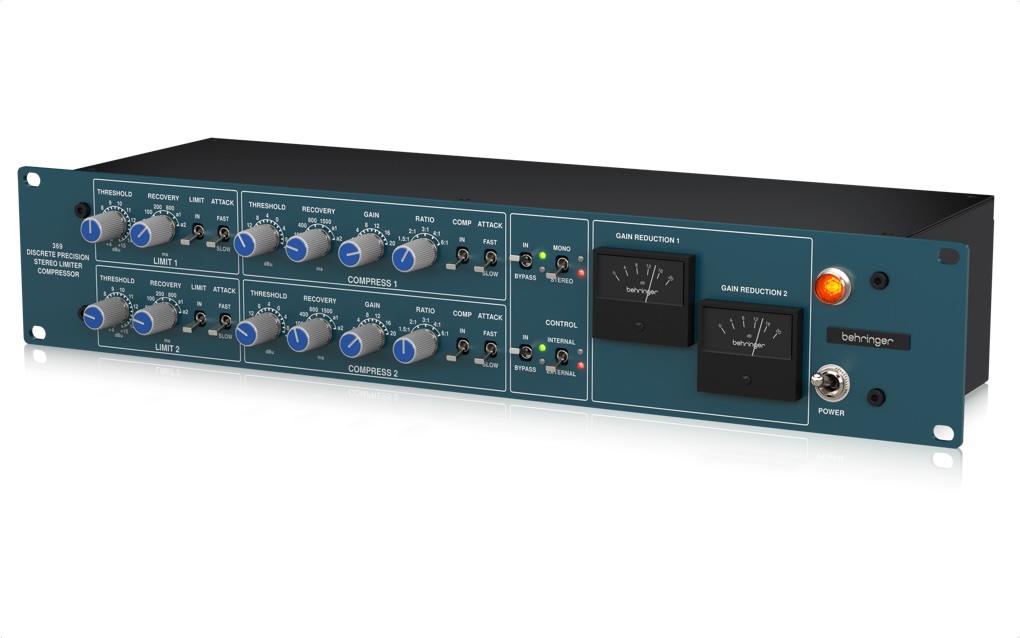- in Production by Bobby Owsinski
New Music Gear Monday: Behringer 369 Stereo Compressor
There are certain analog hardware compressors that are considered classic and have stood the test of time. Most have been modeled in the digital domain and anyone who uses a DAW today (which is almost everyone) is thankful for that, but the fact of the matter is that many mixers still prefer some analog mojo added to their ITB mix. A classic buss compressor that’s been used on hits since 1985 is the Neve 33609, but that can set you back around $4k. Now Behringer has released a pretty close facsimile for a whole lot less money – the Behringer 369.

Just like the 33609, the Behringer 369 is a stereo unit with both limiter and compressor sections. The limiter comes first in the signal path, with a simple Threshold control, and a Recovery control, which is another way of saying “release.” Recovery has 4 preset settings and a1 and a2, which are both program dependent. Attack is a switch to select Slow and Fast. Each channel has it’s own In/Out switch.
In terms of parameter controls, the compressor section is the same as the limiter except for the addition of makeup Gain and Ratio controls. The Ratio can be set anywhere from 1.5:1 to 6:1, but the Recovery times are twice as long as as the limiter Recovery, which is much more appropriate for compressor use. Again, there’s an Attack switch which can be selected to Slow or Fast, and each channel has it’s own In/Out switch.
The master section has a Bypass switch for each channel, a switch for Mono or Stereo operation, and a switch for Internal or External voltage control (the external input is on the rear panel). There are two gain reduction meters that work from left to right instead of the usual right to left when gain reduction is occurring.
The secret to the sound of the original unit was in part due to its input and output transformers, and this is something that Behringer has also included with custom built transformers from the Midas factory.
The Behringer 369 is priced at $499USD and is available now. You can find out more here, or watch the video below.
